*NURSING > EXAM > Test Bank for Canadian Fundamentals of Nursing, 6th Edition by potter > all chapters 1-48 Latest (All)
Test Bank for Canadian Fundamentals of Nursing, 6th Edition by potter > all chapters 1-48 Latest
Document Content and Description Below
1. The nurse recognizes the terminology that applies to culture and ethnicity. Ethnicity is defined as what? a. An appreciation for differences within another group and the promotion of respect for... those differences. b. A common identity with members sharing social and cultural heritage. c. Many cultures coexisting and maintaining cultural differences. d. The belief that one’s own race or culture is more valuable than those of others. ANS: B Ethnicity refers to a shared identity related to social and cultural heritage, including values, language, geographic space, and racial characteristics. The most important characteristic of an ethnic group is that its members feel a sense of common identity. Cultural pluralism is a perspective that appreciates another group for being different and “promotes respect for the right of others to have different beliefs, values, behaviours, and ways of life” (Racher & Annis, 2012, p. 159). Multiculturalism is regarded as a fundamental characteristic of Canadian society; many cultures coexist in Canadian society and maintain their cultural differences. Ethnocentrism is a tendency to hold one’s own race or culture as more valuable than those of others. DIF: Understand REF: 122| 123 OBJ: Define key concepts related to health, illness, and diversity. TOP: Assessment MSC: NCLEX: Psychosocial Integrity 2. Prevention programs for populations is the main focus of which of the following? a. Global health. b. Public health. c. International health. d. Transcultural health. ANS: B The main focus of public health is prevention programs for populations. Global health and international health are concerned with both prevention in populations and clinical care of individuals. Transcultural health is not a domain of medical health. DIF: Understand REF: 116 (Table 9-1) OBJ: Differentiate between global health, international health, and public health in the context of professional nursing. TOP: Assessment MSC: NCLEX: Psychosocial Integrity 3. In understanding health inequity, what does the nurse know? a. Health differences are unavoidable. b. Poverty is not a root cause of health inequity. c. Health inequity is the absence of systematic disparities in health. d. Health inequity refers to unnecessary and unfair differences in health. ANS: D NURSINGTB.COM Canadian Fundamentals of Nursing 6th Edition Potter Test Bank This study source was downloaded by 100000842722785 from CourseHero.com on 11-08-2022 14:11:03 GMT -06:00 https://www.coursehero.com/file/75347389/NCLEX-09pdf/ NU RS IN GT B.CO M Health inequities refer to differences in health that are not only unnecessary and avoidable but, in addition, are considered unfair and unjust. Health differences are seen as avoidable. Poverty is often a root cause of health inequity. The absence of systematic disparities in health is characteristic of health equity. DIF: Remember REF: 117 OBJ: Define key concepts related to health, illness, and diversity. TOP: Assessment MSC: NCLEX: Psychosocial Integrity 4. When asked to describe the differences between ethnicity and race, what should the student nurse explain? a. Ethnicity refers to a shared identity, whereas race is limited to biological attributes. b. Ethnicity and race are actually the same and are based in cultural norms. c. Ethnicity can be understood only through an etic world view. d. Race refers to a shared identity, whereas ethnicity is limited to biological attributes. ANS: A Ethnicity refers to a shared identity related to social and cultural heritage such as values, language, geographical space, and racial characteristics. Ethnicity is different from race, which is limited to the common biological attributes shared by a group such as skin colour or blood type. In any intercultural encounter, there is an insider or native perspective (emic world view) and an outsider’s perspective (etic world view). Ethnicity is best understood by those who are a part of that ethnicity and have an emic world view. DIF: Understand REF: 122| 123 OBJ: Define key concepts related to health, illness, and diversity. TOP: Assessment MSC: NCLEX: Psychosocial Integrity 5. The nurse learns about cultural issues involved in the patient’s health care belief system and enables patients and families to achieve meaningful and supportive care. Such care is known as what? a. Ethnocentrism. b. Culturally competent care. c. Cultural imposition. d. Culturally congruent care. ANS: B Culturally competent care reflects the ability of a nurse to bridge cultural gaps in caring and enables patients and families to achieve meaningful and supportive caring. It is a step toward reaching culturally congruent care. Culturally congruent care, or care that fits the person’s valued life patterns and set of meanings, is the goal of transcultural nursing. Ethnocentrism is a tendency to hold one’s own way of life as superior to those of others. It is the cause of biases and prejudices. Cultural imposition is the use of one’s own values and lifestyles as the absolute guide in dealing with patients and interpreting behaviours. DIF: Remember REF: 123 OBJ: Describe the historical development of the concept of culture, cultural competence, cultural safety, and cultural humility in relation to nursing practice. TOP: Assessment MSC: NCLEX: Psychosocial Integrity NURSINGTB.COM Canadian Fundamentals of Nursing 6th Edition Potter Test Bank This study source was downloaded by 100000842722785 from CourseHero.com on 11-08-2022 14:11:03 GMT -06:00 https://www.coursehero.com/file/75347389/NCLEX-09pdf/ NU RS IN GT B.CO M 6. The nurse is caring for an Indigenous patient who has had recent surgery. In the patient’s culture, it is a sign of weakness to complain of pain. In the nurse’s culture, people who are having pain ask for pain medicine. The nurse has assumed that the patient has not been having pain and does not need medication because he has not complained of pain. What is the nurse doing? a. Utilizing cultural imposition by not asking the patient about his pain. b. Striving to provide culturally congruent care by allowing the patient to suffer. c. Operating from an emic world view of the patient’s cultural beliefs. d. Practising discrimination by not giving the patient pain medicine. ANS: A Health care practitioners who have cultural ignorance or cultural blindness about differences generally resort to cultural imposition and use their own values and lifestyles as the absolute guide in dealing with patients and interpreting their behaviours. Culturally competent care is the care provided by the nurse who attempts to bridge cultural gaps in caring, work with cultural differences, and enable patients and families to achieve meaningful and supportive caring. The nurse in this case has not been able to do this. Any intercultural encounter consists of an inside or native perspective (emic world view) and an outsider’s perspective (etic world view). The nurse is obviously utilizing an etic world view. The nurse did not purposefully ignore the patient’s need. DIF: Apply REF: 123 OBJ: Analyze components of cultural assessment critical to understand the values, beliefs, and practices critical in the nursing care of people experiencing cultural transitions. TOP: Implementation MSC: NCLEX: Psychosocial Integrity 7. When a cultural assessment is performed, knowledge of a patient’s country of origin and its history and ecological contexts is known as what? a. Ethnohistory. b. Biocultural history. c. Social organization. d. Religious and spiritual beliefs. ANS: A A patient’s country of origin and its history and ecological contexts is known as ethnic heritage and ethnohistory, and k [Show More]
Last updated: 1 year ago
Preview 1 out of 8 pages
Instant download
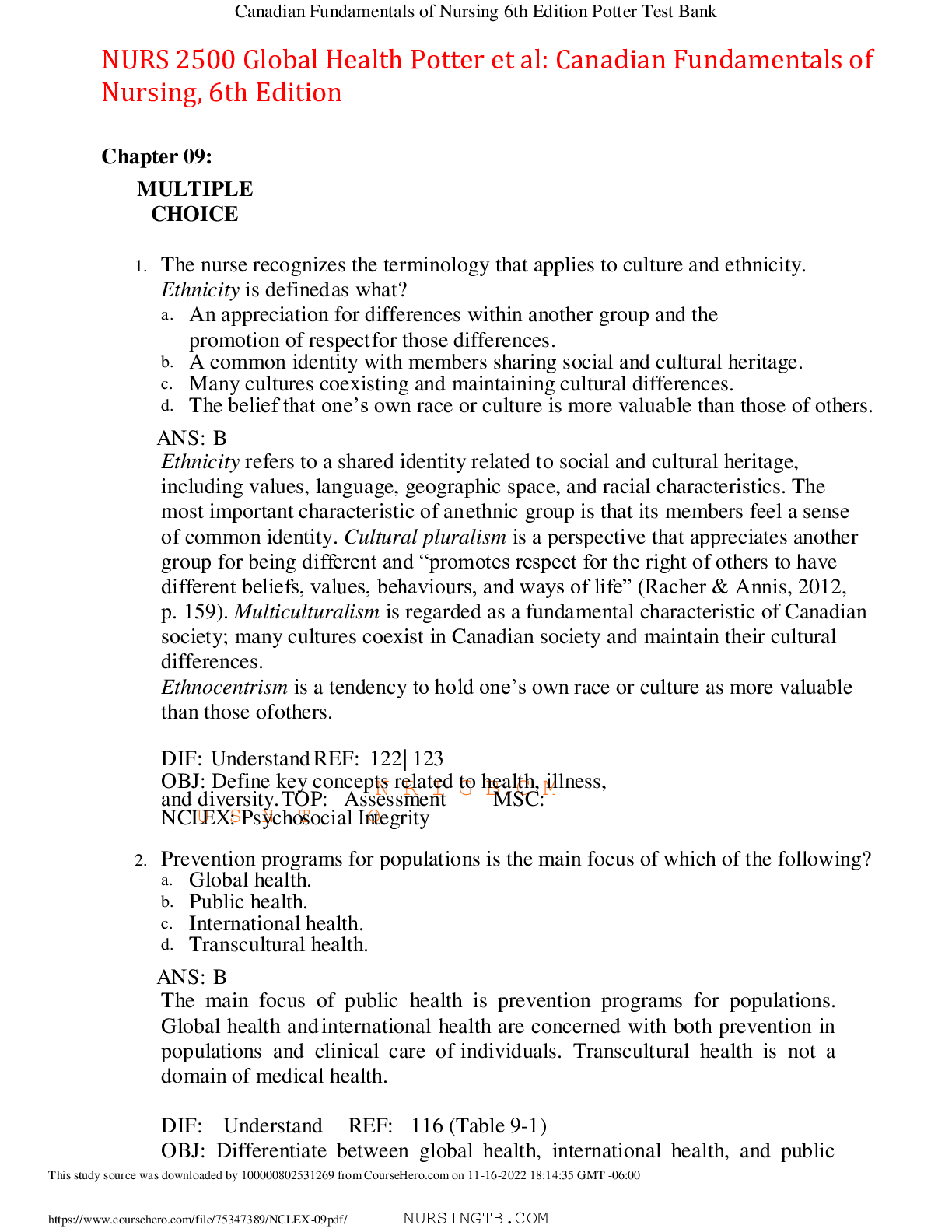
Instant download
Reviews( 0 )
Document information
Connected school, study & course
About the document
Uploaded On
Nov 08, 2022
Number of pages
8
Written in
Additional information
This document has been written for:
Uploaded
Nov 08, 2022
Downloads
0
Views
25



 Leadership ATI correctly answered to pass.png)


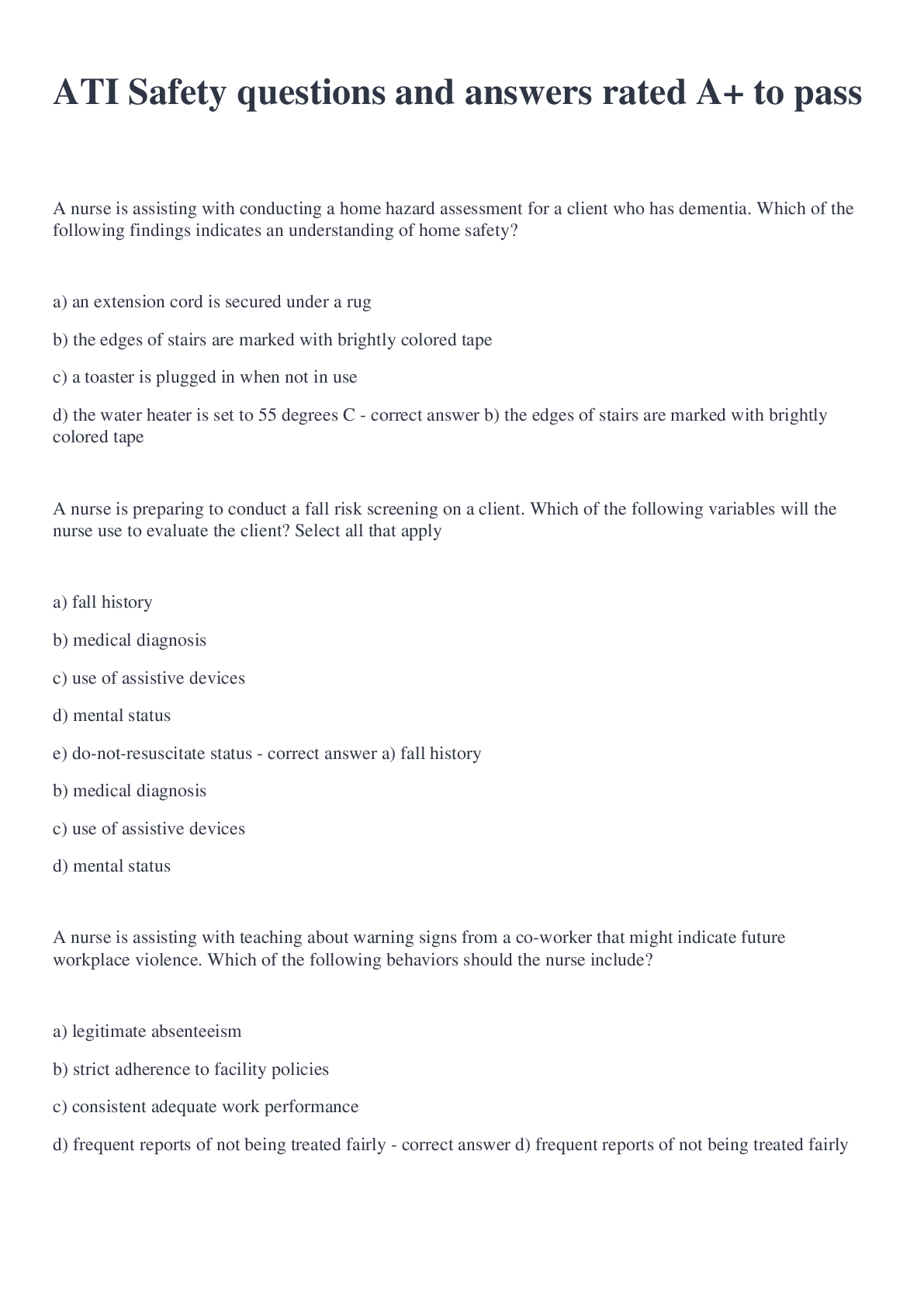
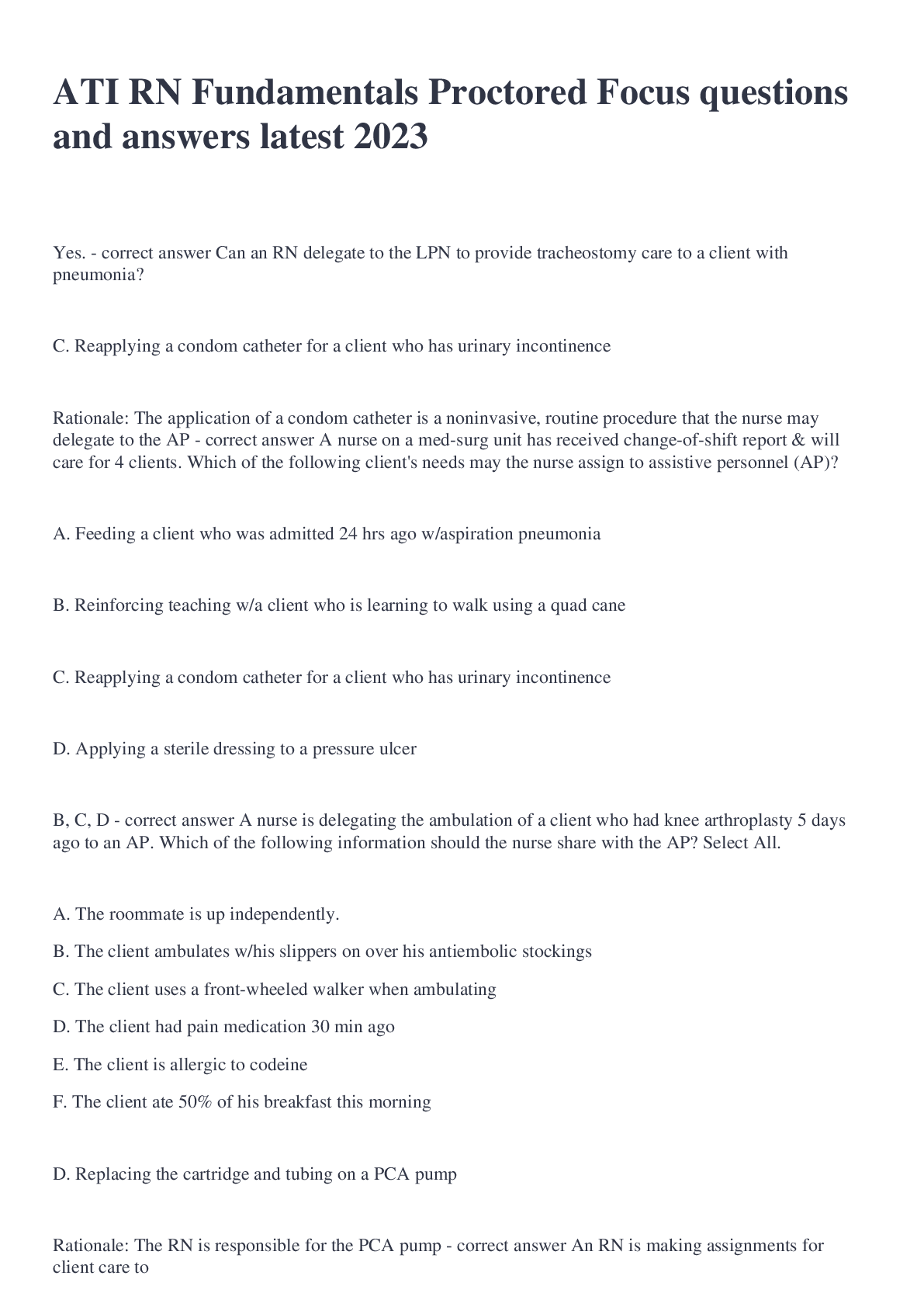

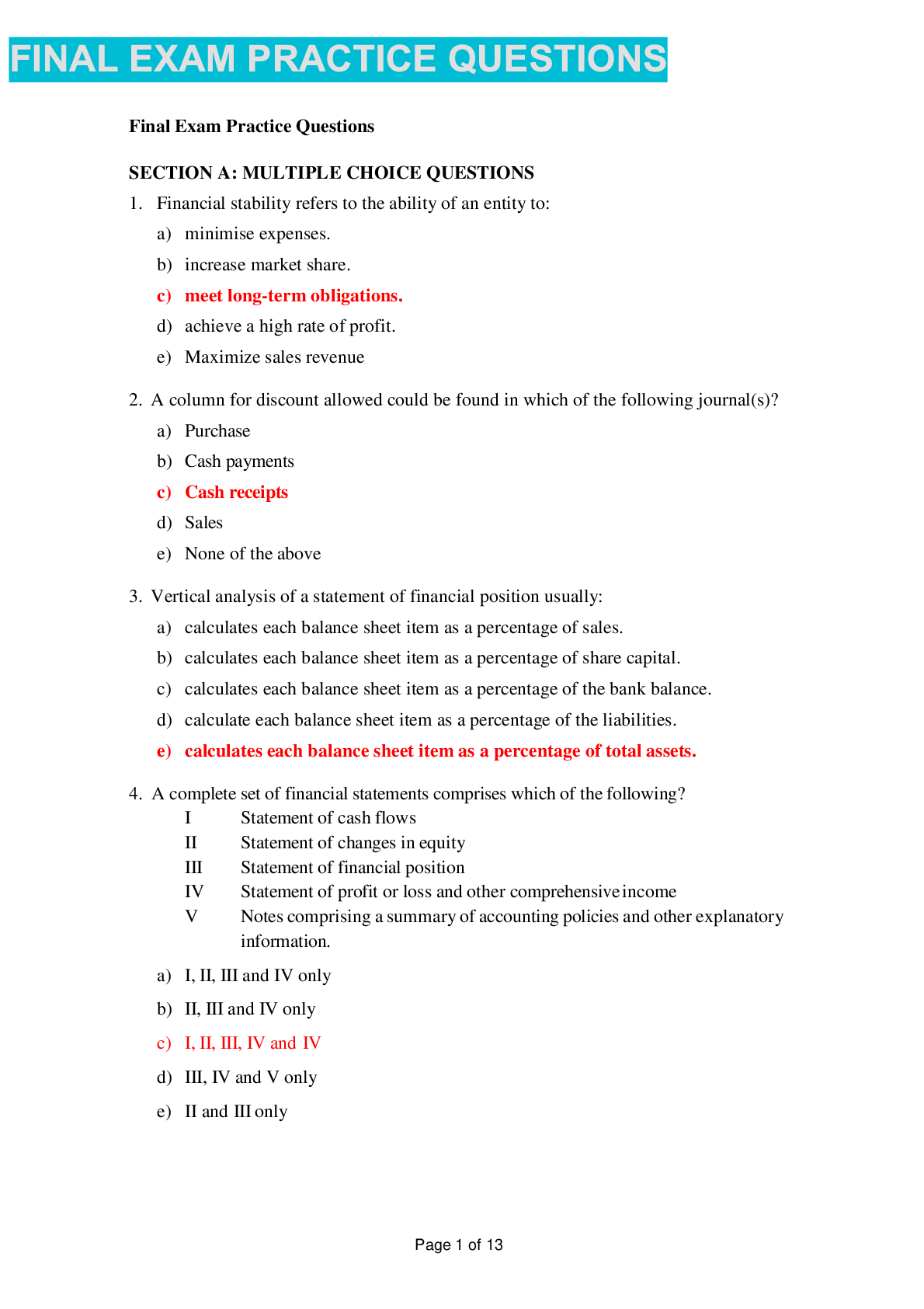


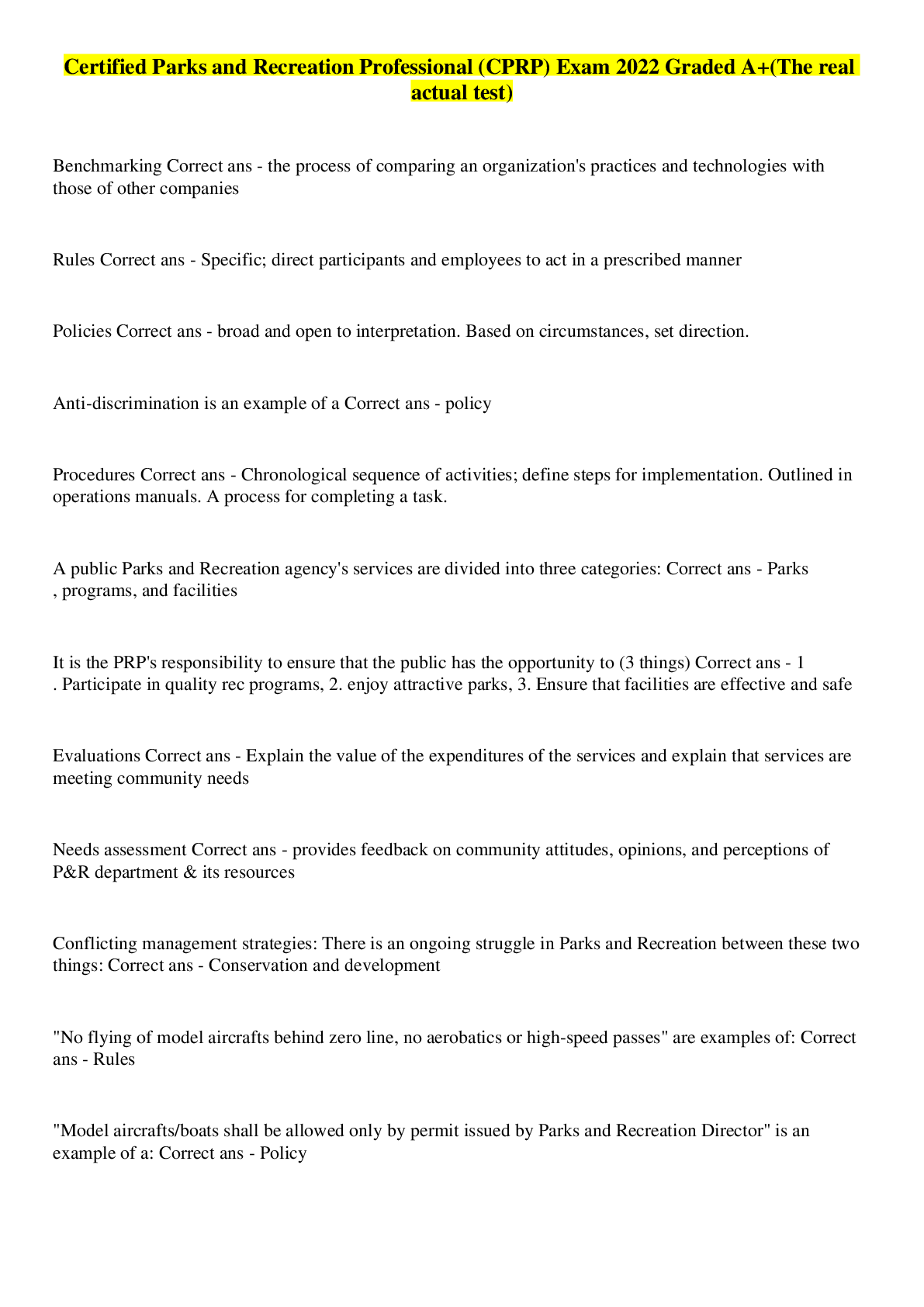
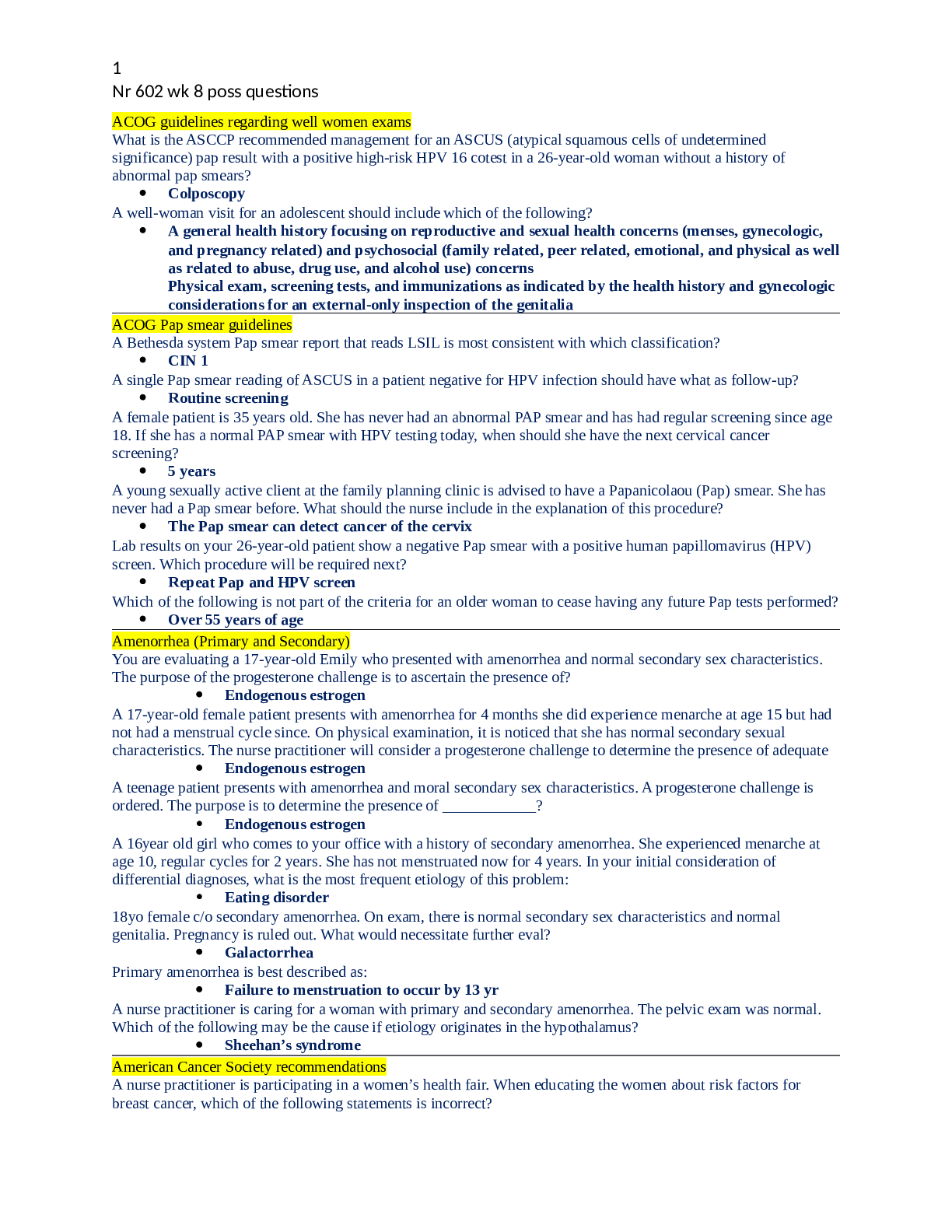

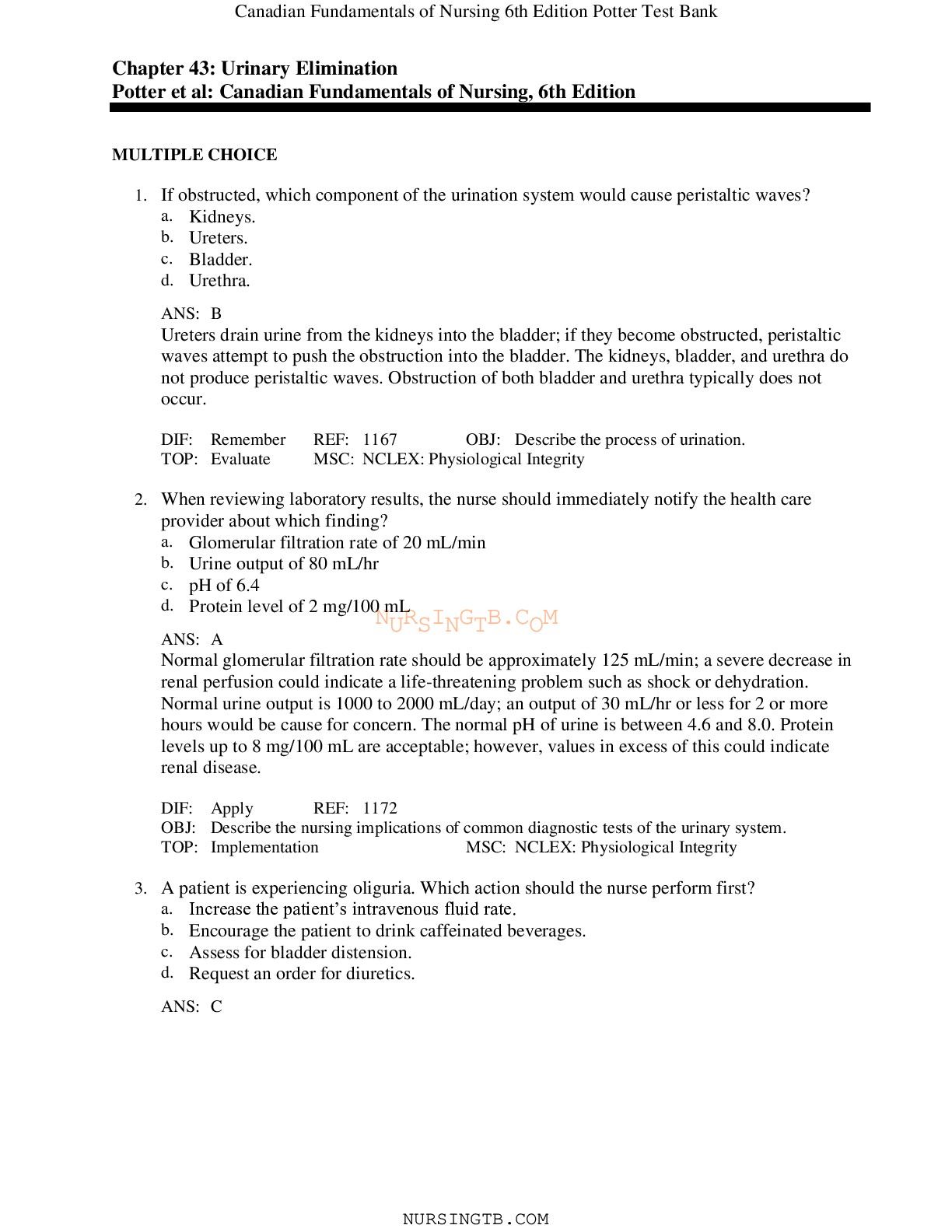


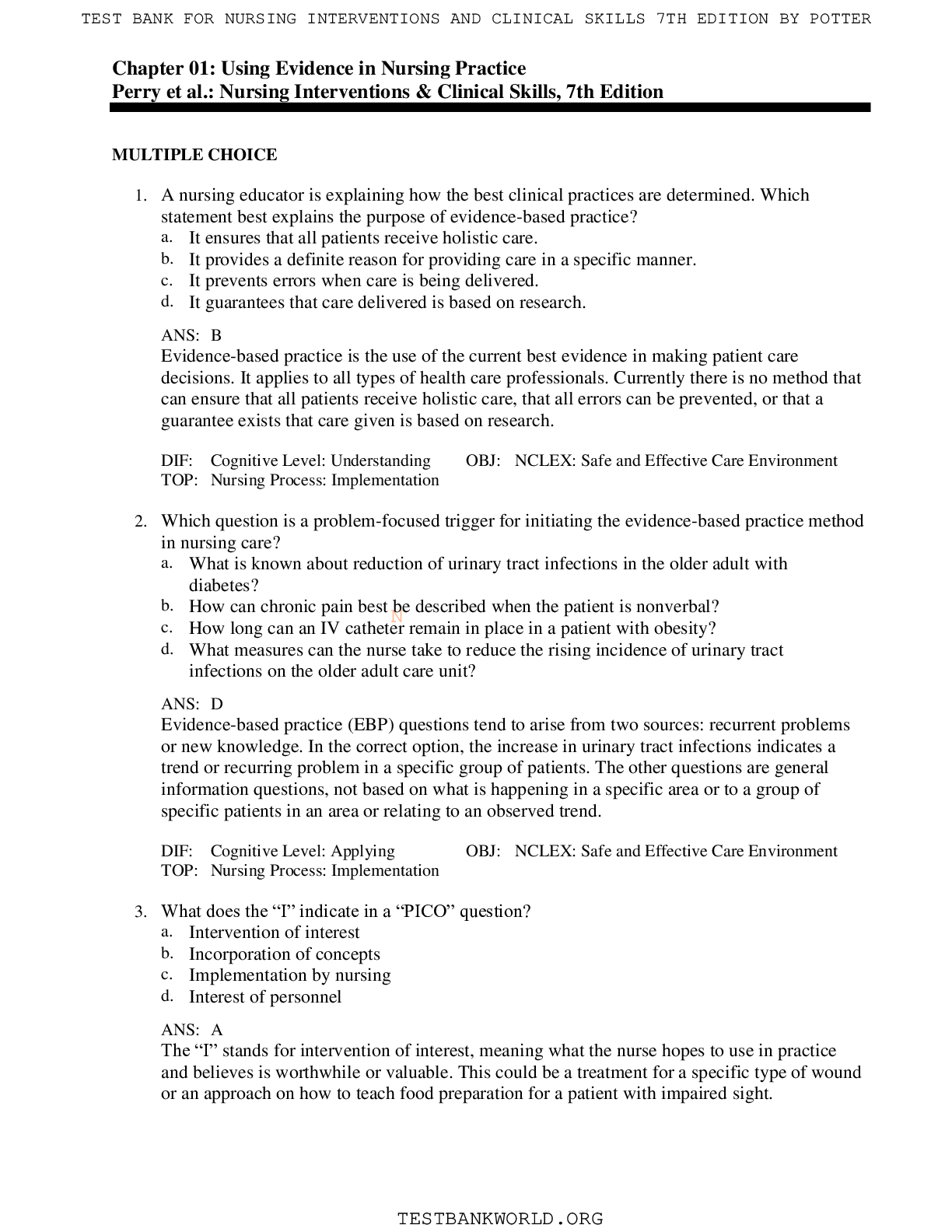
.png)


